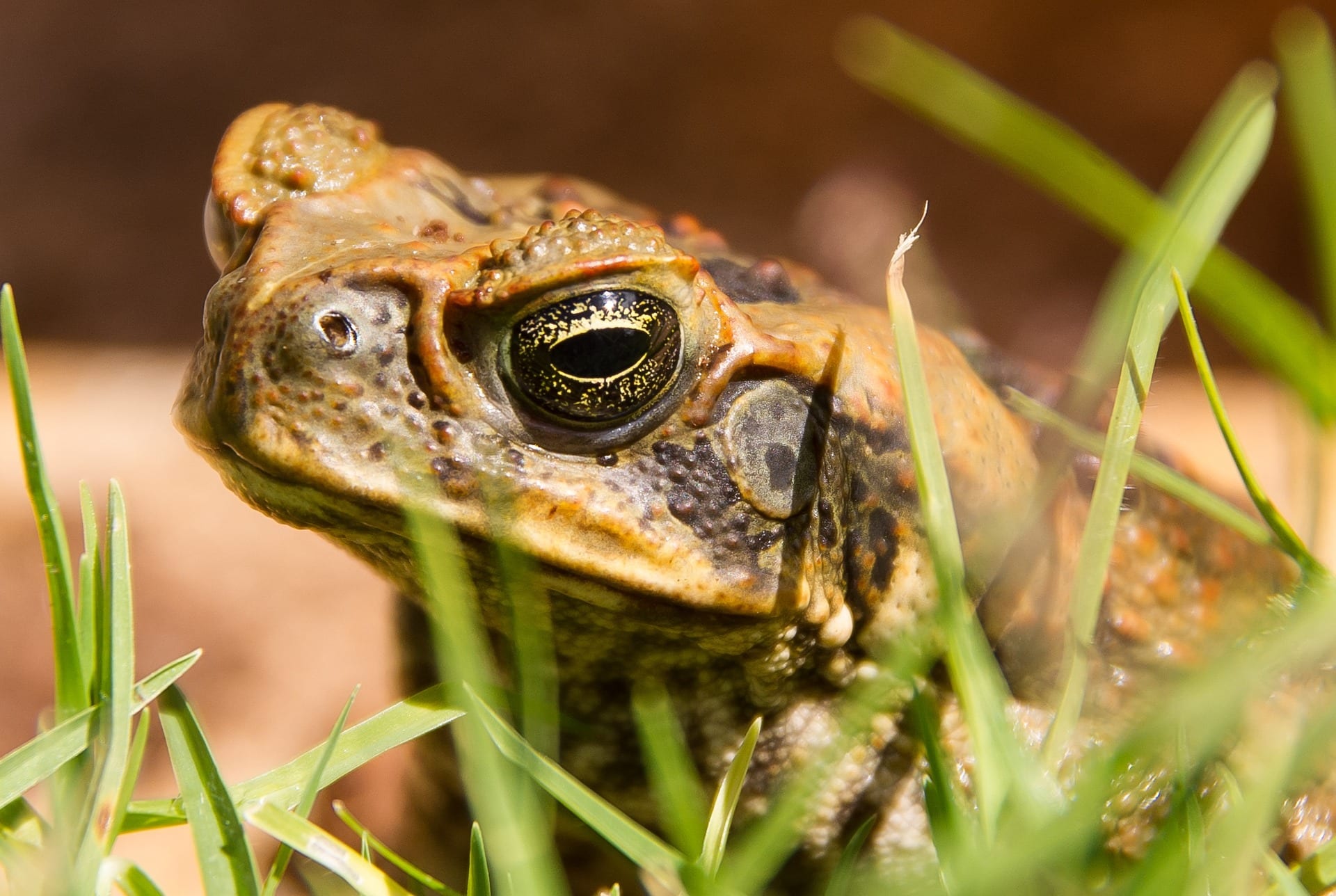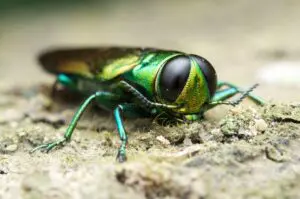

Ever wonder what those huge warty creatures on your Florida property are? Well, they’re probably cane toads! Despite their immense populations, cane toads still have somewhat of a cloud of mystery about them, so we put together an all-encompassing guide on identifying and dealing with cane toads.
Background
Cane toads, also called bufo toads, are an invasive species of large amphibians. In the U.S., they can be found in Southwestern and Central Florida, as well as in an isolated population in the Florida Panhandle. They are not native to Florida, though. Rather, they are native to South America, Central America, and the southernmost parts of Texas. These troublesome toads were brought to Florida in the 1930s and 40s to protect the sugar cane crops from pests. Their intended job is actually how they got their name. They did eat the pests they were supposed to eat, but unfortunately they ate pretty much everything else too. As you can imagine, that wreaked havoc on the ecosystems in which they lived. Their highly damaging eating habits lead to them being labeled a high risk species in 2018.
Cane toads breed between March and September with females laying between 8,000 and 35,000 eggs at a time! This causes their populations to explode during the summer. Their eggs are laid in long strings and look almost exactly the same as those of native toad species. Cane toads are able to adapt to a wide range of conditions, allowing them to thrive in several different environments. They are common in developed neighborhoods, especially those that feature freshwater ponds, lakes, swimming pools, and ornamental pools. They also live in agricultural areas, floodplains, and mangrove swamps. They do not climb well, so wherever they live, they typically stay at or near ground level.
Cane toads are nocturnal, meaning they only emerge at night to hunt. They will eat practically anything they can fit in their mouths, but they usually stick to frogs, snakes, small birds, small mammals, and small reptiles, as well as invertebrates like beetles, roaches, centipedes, millipedes, scorpions, spiders, and crabs.
Identification
Cane toads are large and stout, with warty, dry skin. They are typically either gray, reddish-brown, dark brown, or yellowish in color, and they have cream-colored bellies. This species usually grows to be between 4 and 6 inches, but some individuals grow up to 9 inches! Any toad spotted in Florida that is larger than 4 inches is most definitely a cane toad, as no native species grow to that size. Cane toads have short legs with partially webbed back feet and unwebbed hands. They do not have pads on the ends of their fingers. Unlike some native Florida toads, cane toads do not have any crests or knobs on the tops of their heads. They do however have ridges above their eyes that come together over their nose. They also have prominent, triangular poison glands on their shoulders.
Dangers
When provoked, the poison glands on a cane toad’s back will secrete a milky-white substance that is toxic to humans and pets alike. The substance is extremely irritating to human eyes and cuts in the skin, and it is far more toxic to pets. If a pet licks, bites, or ingests a cane toad, the toxin will cause serious distress and can even kill them in as little as 15 minutes without proper care. Symptoms to watch for in pets include strange, frantic, and disoriented behavior, as well as brick-red gums, crying, head shaking, loss of coordination, foaming of the mouth, and seizures. If your pet comes into contact with a cane toad, contact a veterinarian immediately. Use a damp cloth to wipe its gums, tongue, and inside of the mouth to get rid of as much of the toxin as possible. Do not use a hose to flush out your pet’s mouth, as that may cause some of the toxin to be pushed down your pet’s throat.
Tips
Here are some pro tips on how to keep cane toads off of your property:
- Place a mesh fence or barrier around your property. Or, if you have a fence already, reinforce the bottom with mesh and repair any openings
- Keep your grass short, keep the undersides of shrubs trimmed, and clear any debris from your yard so cane toads have fewer places to hide during the day
- Do not leave pet food and water bowls out overnight, as can toads will happily eat your pet’s food and bathe in your pet’s water
- Cane toads are attracted to the proteins in dog droppings, so any droppings should be picked up right away
- Turn outdoor lights off at night. Lights attract bugs, which attract cane toads. If keeping your outdoor lights off at night is not an option, consider swapping your regular light bulbs out for bug light bulbs, which attract fewer bugs
If these tips do not keep all of the cane toads out, do not worry. The Florida Wildlife Commission not only allows, but encourages property owners to kill any cane toads on their land. To do this, you should first put on protective eyewear and nitrile gloves. Use a fish or butterfly net and a deep bucket to catch the toad, and use extreme caution to avoid any contact with the toad’s toxin. Once you have caught the toad, spray its lower belly or back with 20% benzocaine sunburn spray or lidocaine ointment. This will render the toad unconscious after a few minutes. When the toad is unconscious, place it in a plastic bag and put it in the freezer for a week. After the week is up, dispose of the cane toad in the trash, do not bury it.
For more information on cane toads in Florida, visit https://myfwc.com/






